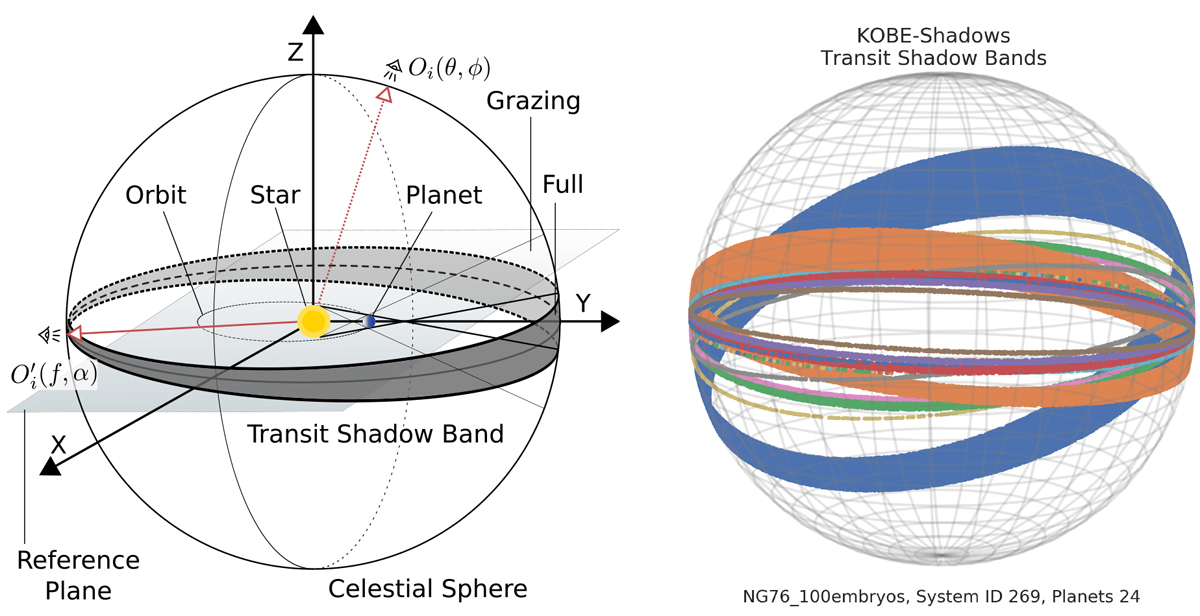Fig. C.1

Download original image
Thegeometry of transiting planets as implemented in KOBE. Left: Transit geometry for a single star–planet system. The dashed red arrow represents the initial location of an observer Oi(θ, ϕ), and the solidred arrow gives the rotated location of same observer Oi(f, α) (see text for details). Right: Example of transit shadow bands for a 24-planet system (star and planets are not shown). KOBE-Shadows calculates whether an observer is present inside the fulltransit shadow band of any planet in this system. The innermost planet has Ptra =12% and is detectable by observers marked in blue. The second (Ptra = 6%) and the third innermost planet (Ptra = 2%) are detectable by observers (in orange and green, respectively). The probability to potentially detect any four planets simultaneously via transit for this system is ~ 8%, which is halved for simultaneously detecting any nine planets.
Current usage metrics show cumulative count of Article Views (full-text article views including HTML views, PDF and ePub downloads, according to the available data) and Abstracts Views on Vision4Press platform.
Data correspond to usage on the plateform after 2015. The current usage metrics is available 48-96 hours after online publication and is updated daily on week days.
Initial download of the metrics may take a while.


